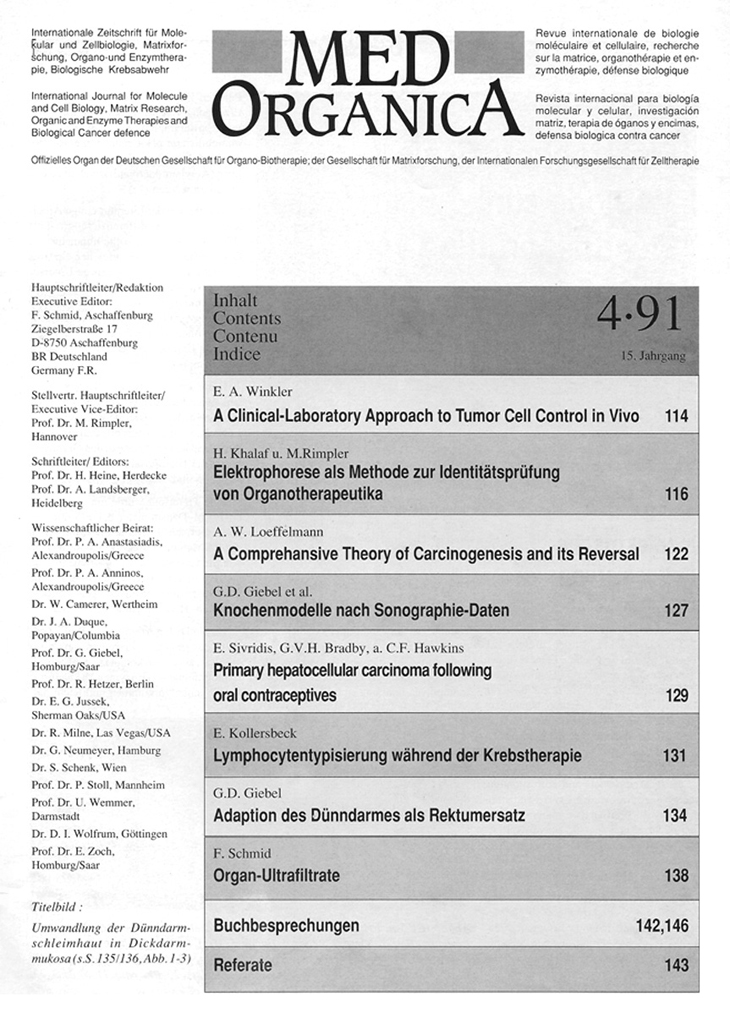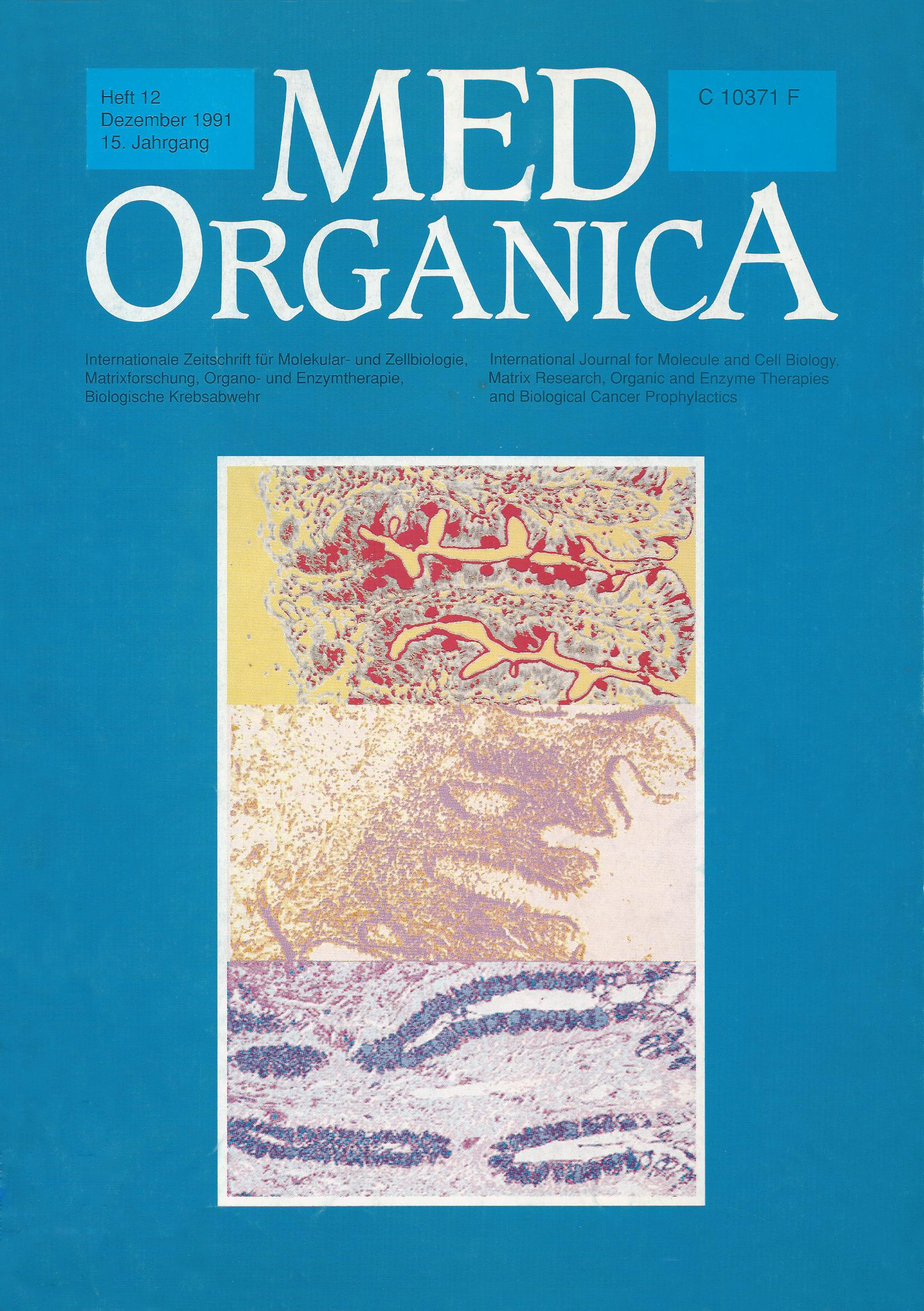|
Tumor cell control, cloned autologous cell transplantat in cancer, cell therapy in cancer, anti-oncogen transfer, transfection of healthy/repaired alleles, gene therapy in cancer
Theoretical Medicine:
A Clinical-Laboratory
Approach to Tumor Cell
Control in Vivo
ENNO A.
WINKLER
Medorganica (Cologne) 15 (1991),
114
Increasing
numbers of studies are showing that formation of tumor cells is associated
with mutational activation of cell integrated oncogenes (1,2). According to
experimental and epidemiological data (3) these mutations might be caused by
transcription errors or degeneration as well as biological, chemical and
physical noxes. Several proceedings have been described how to functionally
inactivate or substitute wildtype genes (4), unfortunately without gaining yet
clinical relevance.
On the other
hand there is clinical and laboratory evidence that healthy organisms and
tissues are capable to control activated oncogenes and resulting tumor cells,
and that in the case of clinical tumor growth the inhibitory or surveillance
mechanisms must have failed. Recent reports indicate that tumor cell growth
can be inhibited in culture and nude mice by influences of adjacent healthy
cells and certain cellular proteins (5, 6) thus confirming clinical
observations experienced by almost every oncologist. In early human breast
cancer better tumor control is achieved by restricted surgery and radiation
therapy than by radical mastectomy (7). This also seems to be true for tumors
of the rectosigmoid (unpublished personal data).
Similar
experiences are reported from radiation biology: Irradiated cells are better
capable to repair DNA damage when imbedded in same type cells
assembly.
Having these
facts in mind - and being far away from already knowing in detail each
molecular biologic step of tumor cell transformation and possibilities of
correction - a new approach to tumor cell control or restoration of
differentiation capability in primary tumors as well as in metastasis might be
the intravenous/local intraarterial transplantation of autologous cells or in
a further step the transfection of specific (antioncogenic) alleles, cloned
from healthy parts of the primary tumor bearing tissue. It can be assumed that
healthy cells or their fragments – like in bone marrow transplantation – only
will adhere to mother tissue. Looking to the future even transfection of
repaired or synthetic (8) dominant alleles or specific possibly
omnihistocompatible fragments of alleles might become feasible.
Transferred to
prior animal experiment and then to clinical oncology this would
signify:
I Gross bulk
tumor and metastasis surgery or radiation therapy in order to reduce tumor
mass and secure intimate and quantitatively sufficient contact between
remaining tumor cells and cloned autologous cells/alleles to be transplanted,
preservation of tumor bed, preservation of organ.
II Cloning of
healthy cells resected from the primary tumor bearing tissue.
III
Post-operative/-radiation autotransplantation therapy.
References:
- Bos, JL et al, Nature 327, 293-297
(1987)
- Liu, E
et al, Nature 330, 186-188 (1987)
- Winkler, EA, Berliner Ärztekammer 21, 81-96
(1984)
- Herskowitz, I, Nature 329,219-222 (1987)
- Newmark, P, Nature 327, 101-102
(1987)
- Burck
KB, Liu ET, Larrick JW: Oncogenes. Springer, Heidelberg 1988
- Fisher, B et al, N. Engl. J. Med. 312,665-673
(1985)
- Cumberlidge, G, Medical Focus (Würzburg), 1987, No. 4,
28-30
Dr. med. Enno A. Winkler
Instituto Nacional
de Cancer
Capiatá, Paraguay
|

